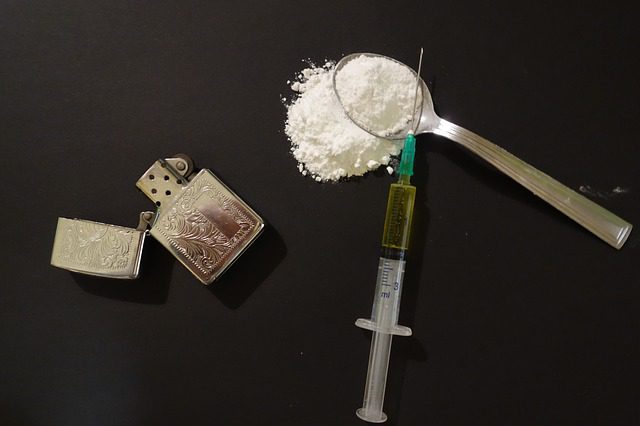
(This post is part one in a guest series on addiction by my friend Celia O’Keefe.)
When I was nineteen, I moved my son and I to a new neighborhood. I lived on the main drag, across the street from a Starbuck’s Coffee. (Now, before I continue, it should be noted that this wasn’t just any neighborhood; This was a solidly middle-to-upper-class, midwestern ‘Ville. One whose city council had only that year relented and allowed such a degenerate establishment as Wal-Mart to be built in their town, after 20 or more years of refusing. Anyway…
Day after day, I noticed the behavior of the drivers pulling into that Starbuck’s drive-thru. Cutting across two lanes of extremely heavy traffic, many times nearly causing accidents. Still every day, there they were- Honking up a storm, hanging out their windows, spitting and screaming obscenities at each other, even throwing trash at other cars! Quite the contrast to how these very same people behaved upon leaving the lot with their coffees. These people became patient, calm, nicely waving others into the lot and waiting for their turn to go through all that heavy traffic, all while happily sipping that “Venti White Mocha with nonfat milk, two extra espresso shots, and please- hold the whipped cream!” and I watched it all from my front porch swing. Being only a few months clean after a five year battle with an addiction to a trifecta of drugs- opiates/heroin, crack/cocaine and amphetamines- I keenly noted this behavior for what it was:
Addiction.
Now, it’s a widely accepted joke; we’ve all heard and probably said some variation of “Not until my morning coffee!!” and everyone laughs because, well…it’s relatable. In fact, 90% of Americans are addicted to caffeine, consuming 300mg a day on average, and 64% of those people primarily get their fix from coffee. That’s more than half of us. How did we become addicted? We had a choice; most people know caffeine is addictive. If we didn’t, we could have easily found out and just simply stopped. But who wants to deal with the headaches? They can be literally blinding. The constipation? So painful, and gross to think about. The mood swings, the trouble focusing, and yes, the exhaustion! “I can’t risk my performance at work just for some coffee. How much harm can a little too much coffee really do, anyway?” The fact is, coffee can have all kinds of dangerous side-effects, including; anxiety, insomnia, muscle breakdown, high blood pressure, rapid heart rate and yes, addiction. The list doesn’t stop there, but don’t worry, coffee drinkers! I’m not here to shame you or to scare you. I’m simply here to explain some things about addiction to you.
I start off using coffee as an example because, again, 90% of us can absolutely relate. None of us want to be caught without having had that first, (or second, or fourth…) cup of goodness. So why is it then, so difficult for so many to empathize with other people’s addictions, when the large percentage of us can’t even be decent people without our cuppa caffeine?
The answer is simple; Stigma. For those of us who need a refresher, “stigma” is defined as “a mark of disgrace associated with a particular circumstance, quality or person.” Those of us familiar with the story of the crucifixion/resurrection, Padre Pio and St. Francis of Assisi may recognize the similarity of this word to another word; stigmata, said to have been experienced by only the holiest among men.
So, what’s the big deal with this stigma against addicts and addiction?
Addiction doesn’t discriminate, so let’s stop and think about how it can sink its claws into anyone.
Predisposition to addictive behaviors is most often linked to genetics or childhood trauma. Yep; PTSD isn’t just for veterans, folks. In my case, I had both genetics and trauma working for me. Lemme tell you how it works:
The basal ganglia or “reptilian brain” is the part of your brain that controls the decision-making process. When you experience trauma at a young age, this part of the brain is often damaged and becomes “frozen” at the age which trauma was experienced (in my case, trauma began at about 3 years old.) Similarly, if your genetic makeup is that of bipolar, bpd, schizophrenic, etc., your “reptilian brain” may indeed not function as it should- even if you-yourself, don’t seem to suffer from those illnesses- because of inherited, genetic traits. As we step into the future of mental health, it’s important to de-stigmatize these aspects of humanity so we can address them.
For the sake of keeping this post readable, I’ll be using just one, short, broad-brush example of how these factors can come into play.
When we have a surgery or are seriously injured, we get prescribed certain opiate-based pain-killers. You take one and it’s like a miracle- the pain is gone! Physically, mentally…it seems like magic. As pain and worry melt away, you can finally take a little pain-free nap. Like it or not, these opiate-based pain killers are essentially, tiny heroin pellets, and that “magic” is a high. The only difference between these and what you’ll find in the street is that
- You’ll know the exact dosage
- You’ll know exactly what’s in those pills– if you just ask
- The street charges less for heroin and more for the “sanitary pellets”
You might be thinking, “I got my wisdom teeth out, finished the pills and I was fine!” Back surgery, c-section, sciatica pain- all pretty valid reasons opiates have been prescribed. If you finish a course of these and you’re just fine, CONGRATS! Really. But everyone’s mind doesn’t work that way, and stigma keeps us from talking about it.
What can happen to someone predisposed to addictive behavior is that their brain more readily surrenders to foreign substances coming in and stops producing vital chemicals on its own. Then, their abnormal basal ganglia may not send the same signals as a neuro-typical person’s would. So, while one person might notice towards the end of their medicinal course of painkillers that the pills aren’t doing much (this happens because your tolerance increases) and just stop taking them, someone who is neuro-diverse may take this to mean they need more. And going strictly by what their brain is telling their body- they really do. This person may then turn to an illegal source, all the while their tolerance increasing, as their a-typical “reptilian brain” urges them to pour resources into trying to address the symptoms of this disease- Severe depression/anxiety, muscle pain, vomiting and diarrhea. The progression continues and this person may begin smoking or shooting up heroin, because their sickness and sadness just won’t go away. All because stigma against mental health/addiction barred them from learning about themselves and their genetics
This person may be your wife, sister, son or father, suffering in silence until it’s painfully obvious. 130 people die every day- many of them suffering silently, not understanding why or how they got where they are. Too sick and caught up in the disease to see how far they’ve slipped because they don’t “look like that” or they don’t “do that for it” or they’re “not as bad” as what they’ve seen on T.V. or they’re possibly just too ashamed to acknowledge it and ask for help. So next time you’re feeling snappish before your third cup of morning coffee, try to remember this;
Addiction doesn’t discriminate- but people do. Make sure you’re doing your part to get educated and understand how this disease affects those suffering with it because addiction is not a choice, and it is most certainly a disease.
(image via Pixabay)












